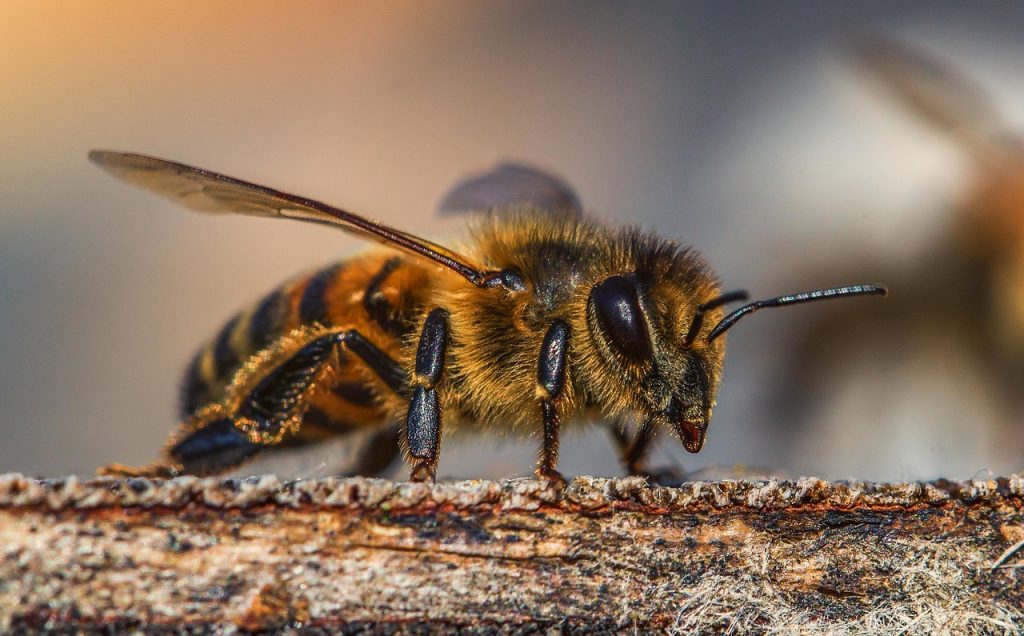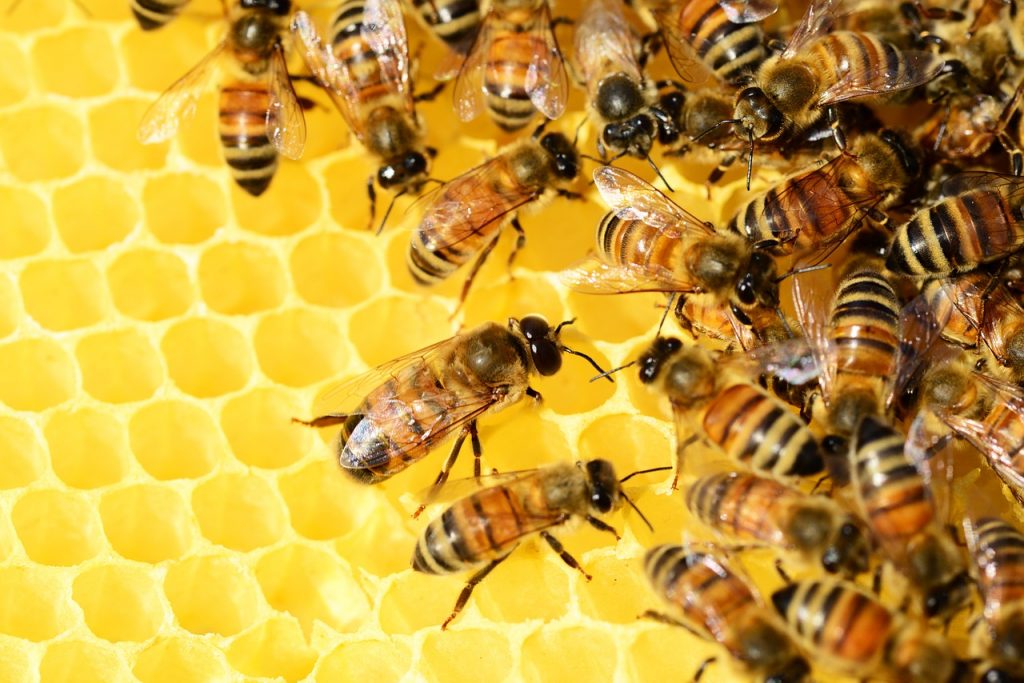Beekeepers Are Using Tracking Devices To Curb Bee Theft
Bee theft is on the rise and Beekeepers are taking matters into their own hands to stop it.
This article is more than 2 years old

Beekeepers from all over the country transport billions of honeybees to California each year. During this time, the bees are rented to almond growers who require the insects to pollinate the state’s most valuable crop. However, when the almond trees blossom, blanketing entire valleys in white and pink blooms, so do beehive robberies, which have grown significantly common. In fact, there has been so much bee theft that beekeepers are now using GPS tracking devices, security cameras, and other anti-theft technologies to secure their valuable colonies.
Increased bee theft has been recorded around the country, most recently in central Pennsylvania. During the theft, three hives containing roughly 60,000 bees were removed from a grocery chain’s garden. Authorities said 1,036 beehives worth hundreds of thousands of dollars have been stolen from orchards around the state in the last several weeks. 384 beehives were stolen from a field in Mendocino County, prompting the state beekeepers association to offer a $10,000 prize for information leading to their return.
Helio Medina, another beekeeper who was a victim of bee theft lost 282 hives a year ago, had frames, which were used to store the honeycomb, discovered by investigators. According to Medina, the theft wreaked havoc on his apiary, so he installed GPS trackers inside the boxes this year. He also secured them with cable locks and placed cameras nearby. He drove about in the evening patrolling the orchards as the almond bloom approached and the hives got more valuable.
Bee theft usually takes place at night, when no one is around and the bees have returned to their hives. A beekeeper or someone knowledgeable about bee transportation is usually the rustler. Beekeepers are expected to go rogue due to a shortage of bees and rising pollination fees, which have risen from less than $50 per hive two decades ago to as much as more than $200 per hive this year.

Bee populations are famously insecure, owing to a variety of issues such as disease, habitat loss, and insecticides. Last summer’s drought in Western states weakened colonies as well. The lack of rain has decimated wildflowers, which offer nectar for bees to convert into honey.
For beekeepers, experiencing bee theft means losing income from honey production and future pollination, as well as the cost of maintaining the hive throughout the year. They say they are barely breaking even. Freeman, who got into beekeeping after investigating his first hive theft, said he advises beekeepers to use security cameras and put their names and phone numbers on the boxes. Some beekeepers, he added, have tried tagging their hives with SmartWater CSI, a forensic instrument that helps authorities track down stolen property. Even when thieves try to disguise boxes, the transparent liquid is visible only under UV light, even through layers of paint, allowing police to identify the legitimate owner.
In 2016, Freeman collaborated with prosecutors to prosecute a guy accused of stealing 64 beehives with theft of animals to increase the crime’s seriousness. Theft of property worth less than $950 is considered a misdemeanor in California. Theft of any agricultural commodity valued at $250 or more, however, is deemed a felony.
Growers should hire reputable beekeepers who can show proof of ownership of their hives, according to the California State Beekeepers’ Association. Beekeepers should communicate regularly with growers about where their hives are placed, and growers should hire reputable beekeepers who can show proof of ownership of their hives. Meanwhile, the almond business is attempting to lessen its reliance on bees by cultivating “self-fertilizing” almond varieties that require fewer bees for pollination, as well as investing in research and other activities targeted at boosting bee health.



